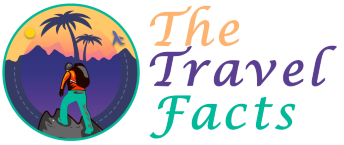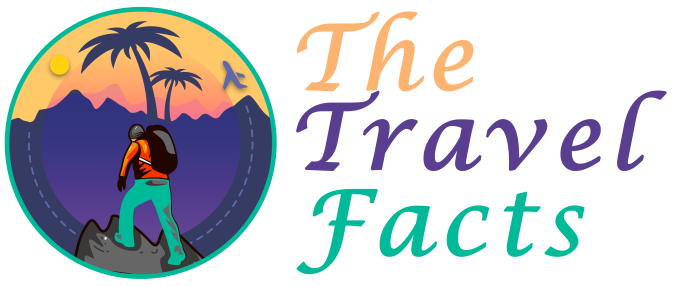Cuba, a Caribbean island, is well-known for its sunny weather all year round, its white sand beaches, and its numerous all-inclusive resorts that serve cool mojitos and warm buffets. Cuba is an undiscovered traveller’s paradise just waiting to be discovered.
Many different types of travellers, such as retired couples, school groups, and vacationing families, like the country. Visitors travel there searching for palm palms and relaxing times in the pleasant climate. The key to enjoying a wonderful vacation in Cuba is to get there at the right time of year.
Read the facts in this article to learn when you should visit Cuba for the best weather, the most breathtaking scenery, and less crowded sandy beaches. Please find out more about our comprehensive selection of unique places to travel while soaking up the Cuban sun.
Don’t worry about visiting Cuba at a bad time; in addition to telling you when it’s best to go, we’ll also provide you with helpful travel tips and suggestions to make your trip to Cuba unforgettable.
October to April is regarded as Cuba’s busiest travel period. This Caribbean island has a wonderful climate with long periods of beautiful weather, warm, sunny days, and little to no rain, especially in Havana and along the coast. Cuba’s south coast beaches typically experience some of the island’s most favourable weather.
Out of all the other months, March and April may be the best ones to travel to Cuba because they have the longest and sunniest days (with an average of seven hours of sunshine per day), the most tolerable temperatures and humidity levels, and the least amount of rain. March and April often see mild lows of 19 to 21 degrees Celsius and highs of 27 to 29 degrees Celsius during the day.
The island nation of Cuba receives an abundance of sunny days, even during the country’s wettest months (May through September). Yet, the country’s humidity and temperature levels rarely reach unacceptable levels.
Table of Contents
What are the seasons in Cuba?
In Cuba, there are two distinct seasons: the dry season, which lasts from November to April and features more sunshine, and the rainy season, which lasts from May to October (wet, albeit still with considerable amounts of sunshine too). Even in the driest months, it can rain, and even in the rainiest months, the mornings are usually clear, while afternoon storms form later in the day. The dry season has temperatures between 24 and 27 degrees Celsius (75 to 80 degrees Fahrenheit), whereas the wet season generally has higher temperatures.
The busiest times of the year during the high season, which lasts from December through March, are frequently in December and January. Significant cities along popular travel routes, including Havana, Viales in the centre of the tobacco-growing country, Trinidad, and Santiago de Cuba, as well as the resorts, are crowded at this time. However, even during these busy times, travel to other parts of the nation does not see frenetic levels of tourism.
Cold fronts frequently travel over western Cuba during the hot and dry seasons. These fronts bring precipitation and cause temperatures to drop sharply. A second, less significant hot season that coincides with vacation periods in North America and Europe is brought on by July and August.
Additionally, the hurricane season lasts from June through November. Although hurricane season increases the likelihood of experiencing one, hurricanes do not occur daily. Hurricanes are more likely to occur in September and October. August has the highest average temperature, and because it is the middle of the rainy season, it also has the greatest average humidity. Typically, October is the month with the highest monthly average rainfall.
Cuba is a big enough island to have regional variations in its weather conditions in addition to these main climatic trends. For instance, despite the beginning of the dry season, the Baracoa region in the far east sees the largest rainfall of the year. Temperatures are often 2-3 degrees Celsius higher in eastern locations. Even though eastern locations normally have warmer temperatures, this is the case.
Events that you should witness in Cuba
On this island, which is full of people who love the arts and whose government has funded culture for decades, there are openings for works of literature, theatre, poetry, dance, music, and visual art pretty much every week. Although Havana is the focus of attention, cultural activities are happening all around Cuba, whether at Casas de Cultura or on the streets.
Here is the list of events that you should witness on your way if you are planning to visit Cuba:
Jazz Festival Havana (January)
The Havana Jazz Festival, one of the nation’s longest-running cultural events, was founded in 1978 by a group of Cuban jazz musicians and is held annually in January. Although La Cultura Plaza is where most of the action happens, you may see Cuban jazz instrumentalists and singers and musicians from other countries perform everywhere else in the city, including in churches, on the streets, and even on people’s doorsteps.
Cuban Cigar Festival by Habanos (February)
It only makes sense that a festival would be entirely devoted to Cuba’s most well-known export. This yearly event, which takes place in February, includes seminars on cigar manufacture, factory tours, workshops on rolling cigars, and discussions on the history of the tobacco business, in addition to tastings.
Havana Biennial (March)
Expressive Havana Biennial, held every other March Every time the Havana Biennial lasts the entire month of March, which happens every two years, the city of Havana gets a little more artistic. Instead of just using galleries, there are exhibitions, documentary screenings, workshops, and masterclasses. More than 40 different countries are represented in pieces on the show.
Santo Domingo, Cuba Carnival (end of July)
The second-largest city in Cuba, Santiago, has Carnival around the end of July. The celebrations start with a fire celebration, followed by parades and street parties for the following two weeks. Parades are customary to begin at eight o’clock in the evening; however, keep in mind that the clock is set to Cuban time. The sweltering heat begins to subside slightly at this time.
City in Motion (April)
Dancers from across Cuba and even farther afield congregate in Old Havana’s streets and plazas throughout April to perform modern and traditional dance styles. Nothing will make you want to get up and dance more than the quality, diversity, and innovation on display here.
Las Parrandas de Remedios (16-26 December)
Las Parrandas, one of the oldest and most well-liked Christmas festivals, takes place in Remedios. San Salvador and El Carmen residents compete to see whose neighbourhood can perform the most visually stunning parade as conga bands play in the streets. Have you been missing the festivities? The Parrandas Remedios Museum has information about the festival’s history.
Final Words
Travellers of all stripes will find Cuba a welcome and inexpensive vacation destination. Whether you’re 6 or 65 years old, it doesn’t matter! Cuba’s gorgeous rivers, varied cultural programs, authentic Cuban food, vibrant nightlife, and breathtaking tourist attractions ensure that travellers never run out of things to do.
FAQs
Here is the list of FAQs related to the best time for travelling to Cuba:
Which time of the year is the cheapest to travel to Cuba?
The following seasons of the year will result in the cheapest airfare and accommodation rates for travel to Cuba:
- The period from January 8 through February 11
- The period from May 28 to June 17
- The period from July 30 to December 9 (except the week of November 19)
Generally, the cheapest time for travellers to travel to Cuba in September.
Is Cuba cheap?
However, if you reserve all-inclusive holiday packages from a nation other than the United States, it is possible to travel to Cuba on an affordable budget. You might reduce your costs even more by using shared cabs, eating at paladars, and staying in private homes.
How many days in Cuba is Enough?
If you want to get the most out of your trip, aim to remain in Cuba for at least three or four weeks. This gives enough time to see the island, including Santiago de Cuba’s southeast, Baracoa, the Sierra Maestra highlands, and the ascent of Pico Turquino, Cuba’s highest peak.














